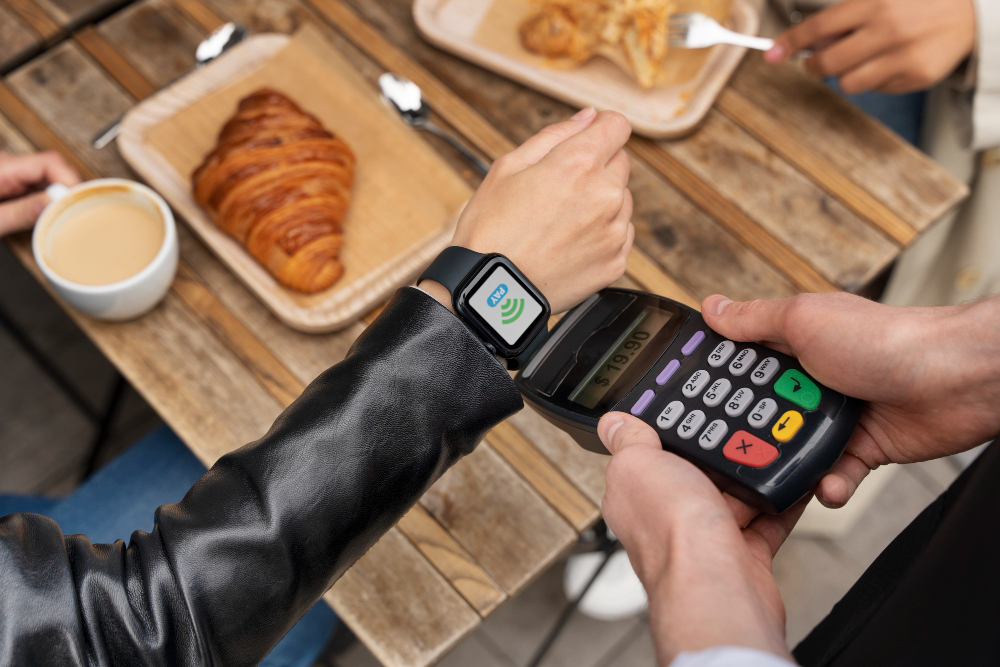In the rapidly evolving digital era, the transition towards a cashless society is accelerating. Contactless payment methods are at the forefront of this transformation, offering convenience, speed, and security. This comprehensive guide delves into the best contactless payment methods available today, exploring their features, benefits, and how they are reshaping the way we conduct transactions.
Introduction to Contactless Payments
Contactless payments allow consumers to make transactions without physically interacting with payment terminals or cashiers. By using Near Field Communication (NFC) technology, Radio Frequency Identification (RFID), or QR codes, these payments can be completed swiftly and securely. As the world moves towards a cashless society, understanding the various contactless payment methods is essential for both consumers and businesses.
Why Contactless Payments are Gaining Popularity
- Convenience: Contactless payments are incredibly fast and easy to use. They eliminate the need for cash or card swiping, reducing transaction times significantly.
- Security: Advanced encryption and tokenization technologies ensure that contactless payments are secure, minimizing the risk of fraud.
- Hygiene: In the wake of the COVID-19 pandemic, contactless payments have gained traction for their hygienic benefits, reducing physical contact with surfaces.
- Integration with Digital Ecosystems: Contactless payment methods often integrate seamlessly with other digital services, enhancing the overall consumer experience.
Best Contactless Payment Methods
- Mobile Wallets
Mobile wallets are digital versions of physical wallets, storing payment information securely on mobile devices. Some of the most popular mobile wallets include:
- Apple Pay: Available on iPhones, Apple Pay uses NFC technology to enable secure transactions at contactless terminals. It supports various credit and debit cards, and transactions are authenticated using Face ID, Touch ID, or a passcode.
- Google Wallet: Compatible with Android devices, Google Wallet allows users to store card information and make payments using NFC technology. It also integrates with Google services, offering a seamless experience.
- Samsung Pay: Samsung Pay stands out with its ability to work with both NFC and Magnetic Secure Transmission (MST) technologies, making it compatible with a wider range of payment terminals.
Benefits of Mobile Wallets:
- Ease of Use: Simply tap the phone on the terminal to pay.
- Security: Advanced security features like biometrics and tokenization.
- Rewards and Offers: Many mobile wallets offer integrated loyalty programs and personalized offers.
- Contactless Credit and Debit Cards
Contactless cards are equipped with RFID chips that allow users to make payments by tapping the card on a compatible terminal. Major financial institutions and card issuers offer contactless cards, including:
- Visa Contactless: Visa cards with contactless capabilities are widely accepted globally, providing a fast and secure payment method.
- Mastercard Contactless: Similar to Visa, Mastercard’s contactless cards offer convenience and security, with extensive acceptance worldwide.
- American Express Contactless: Amex contactless cards provide additional perks and rewards, making them a preferred choice for many consumers.
Benefits of Contactless Cards:
- Wide Acceptance: Accepted at numerous locations globally.
- Speed: Faster than traditional chip-and-pin or magnetic stripe transactions.
- Security: Embedded RFID technology ensures secure transactions.
- QR Code Payments
QR code payments involve scanning a QR code with a mobile device to complete a transaction. This method is popular in markets like China and India and is gaining traction globally.
- WeChat Pay: A leading payment method in China, WeChat Pay allows users to scan QR codes to pay for goods and services directly from their WeChat app.
- Alipay: Another dominant player in China, Alipay uses QR codes for payments and offers a wide range of financial services.
- PayPal: PayPal’s QR code payments allow users to make transactions using their PayPal balance or linked cards by scanning a QR code provided by the merchant.
Benefits of QR Code Payments:
- Versatility: Can be used for in-store, online, and peer-to-peer transactions.
- No Need for Physical Contact: Completely contactless, making it a hygienic option.
- Integration with Apps: Often integrated with popular apps, enhancing user convenience.
- Wearable Payment Devices
Wearable devices like smartwatches and fitness trackers can also facilitate contactless payments. These devices are equipped with NFC technology, allowing users to make payments with a simple tap.
- Apple Watch: Integrates with Apple Pay, enabling users to make payments directly from their wrist.
- Samsung Galaxy Watch: Works with Samsung Pay, offering both NFC and MST capabilities.
- Fitbit Pay: Available on select Fitbit models, allowing users to pay using NFC technology.
Benefits of Wearable Payments:
- Convenience: Pay without needing to reach for a phone or wallet.
- Fitness Integration: Combines fitness tracking with payment capabilities.
- Security: Uses the same secure technology as mobile wallets.
How Contactless Payments Enhance Security
Contactless payments incorporate several layers of security to protect users and merchants:
- Encryption: Data transmitted during a contactless transaction is encrypted, preventing unauthorized access.
- Tokenization: Sensitive card information is replaced with a unique token, reducing the risk of data breaches.
- Biometric Authentication: Mobile wallets often require biometric authentication (fingerprint or facial recognition) for transactions, adding an extra layer of security.
- Limited Transaction Value: Contactless transactions typically have a limit, reducing the potential impact of fraud.
The Role of Contactless Payments in a Cashless Society
As society moves towards a cashless future, contactless payments play a crucial role in shaping the landscape:
- Digital Inclusion: Contactless payment methods are making financial services more accessible, especially in regions with limited banking infrastructure.
- Economic Efficiency: Reducing the reliance on cash can lower costs associated with handling and managing physical money.
- Enhanced Customer Experience: Faster and more convenient payment methods improve the overall shopping experience.
- Data Insights: Digital transactions provide valuable data, helping businesses understand consumer behavior and tailor their offerings.
Challenges and Solutions in Adopting Contactless Payments
While contactless payments offer numerous benefits, their adoption comes with challenges:
- Infrastructure Development: Ensuring widespread availability of contactless payment terminals is crucial.
- Consumer Awareness: Educating consumers about the benefits and security of contactless payments is essential for widespread adoption.
- Security Concerns: Continuous advancements in security technologies are needed to address evolving threats.
Future Trends in Contactless Payments
The future of contactless payments is promising, with several trends on the horizon:
- Biometric Payments: Increasing use of biometric authentication for even greater security and convenience.
- Cryptocurrency Integration: More contactless payment systems integrating with cryptocurrencies.
- AI and Machine Learning: Leveraging AI to enhance security and personalize user experiences.
- Interoperability: Efforts towards creating a seamless experience across different contactless payment platforms.
Conclusion
Contactless payment methods are revolutionizing the way we conduct transactions, paving the way for a cashless society. From mobile wallets and contactless cards to QR code payments and wearable devices, these technologies offer unparalleled convenience, speed, and security. As adoption continues to grow, the future of contactless payments looks bright, promising a seamless and efficient financial ecosystem.





